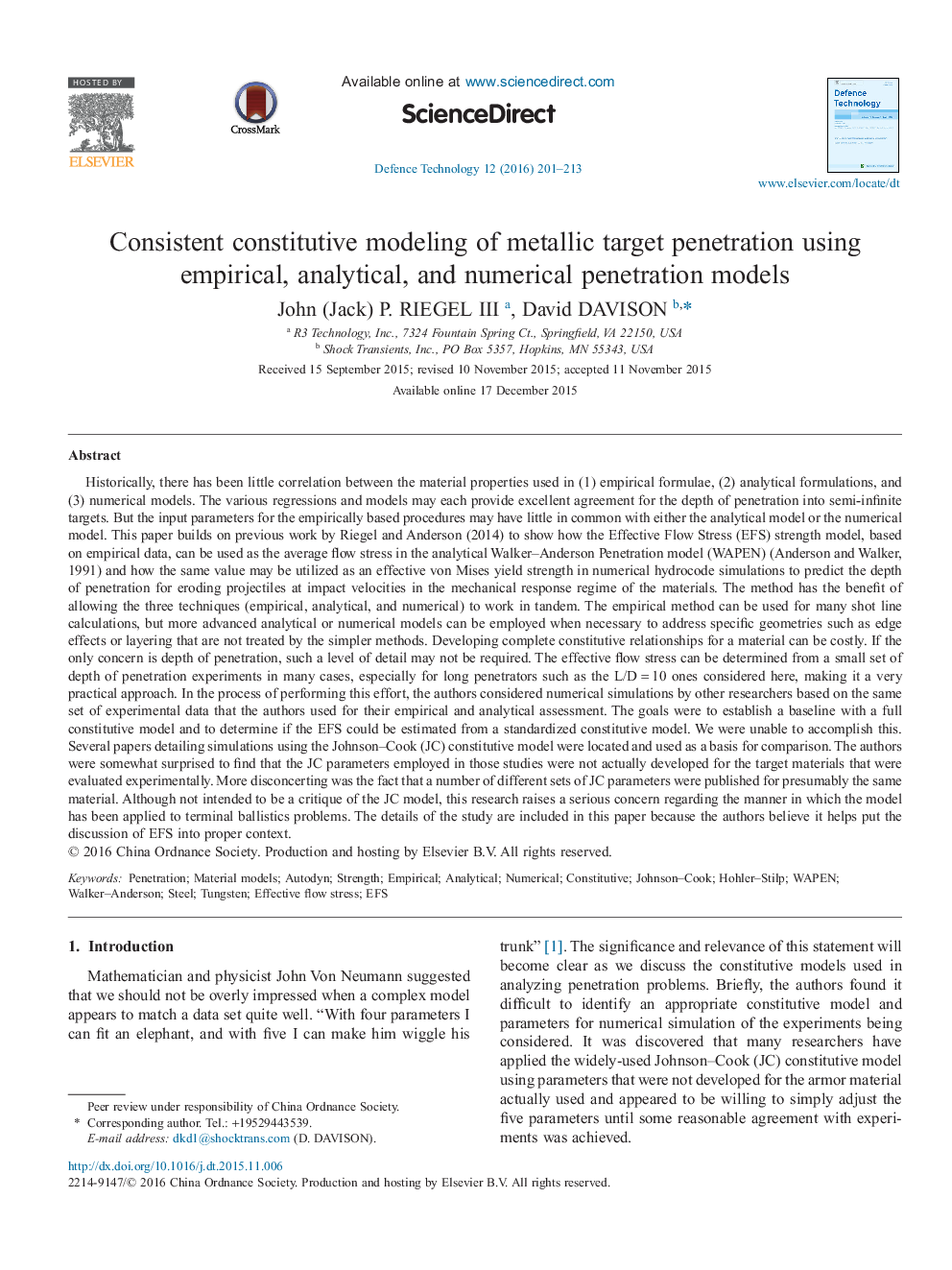| کد مقاله | کد نشریه | سال انتشار | مقاله انگلیسی | نسخه تمام متن |
|---|---|---|---|---|
| 759459 | 896478 | 2016 | 13 صفحه PDF | دانلود رایگان |
Historically, there has been little correlation between the material properties used in (1) empirical formulae, (2) analytical formulations, and (3) numerical models. The various regressions and models may each provide excellent agreement for the depth of penetration into semi-infinite targets. But the input parameters for the empirically based procedures may have little in common with either the analytical model or the numerical model. This paper builds on previous work by Riegel and Anderson (2014) to show how the Effective Flow Stress (EFS) strength model, based on empirical data, can be used as the average flow stress in the analytical Walker–Anderson Penetration model (WAPEN) (Anderson and Walker, 1991) and how the same value may be utilized as an effective von Mises yield strength in numerical hydrocode simulations to predict the depth of penetration for eroding projectiles at impact velocities in the mechanical response regime of the materials. The method has the benefit of allowing the three techniques (empirical, analytical, and numerical) to work in tandem. The empirical method can be used for many shot line calculations, but more advanced analytical or numerical models can be employed when necessary to address specific geometries such as edge effects or layering that are not treated by the simpler methods. Developing complete constitutive relationships for a material can be costly. If the only concern is depth of penetration, such a level of detail may not be required. The effective flow stress can be determined from a small set of depth of penetration experiments in many cases, especially for long penetrators such as the L/D = 10 ones considered here, making it a very practical approach. In the process of performing this effort, the authors considered numerical simulations by other researchers based on the same set of experimental data that the authors used for their empirical and analytical assessment. The goals were to establish a baseline with a full constitutive model and to determine if the EFS could be estimated from a standardized constitutive model. We were unable to accomplish this. Several papers detailing simulations using the Johnson–Cook (JC) constitutive model were located and used as a basis for comparison. The authors were somewhat surprised to find that the JC parameters employed in those studies were not actually developed for the target materials that were evaluated experimentally. More disconcerting was the fact that a number of different sets of JC parameters were published for presumably the same material. Although not intended to be a critique of the JC model, this research raises a serious concern regarding the manner in which the model has been applied to terminal ballistics problems. The details of the study are included in this paper because the authors believe it helps put the discussion of EFS into proper context.
Journal: Defence Technology - Volume 12, Issue 2, April 2016, Pages 201–213
